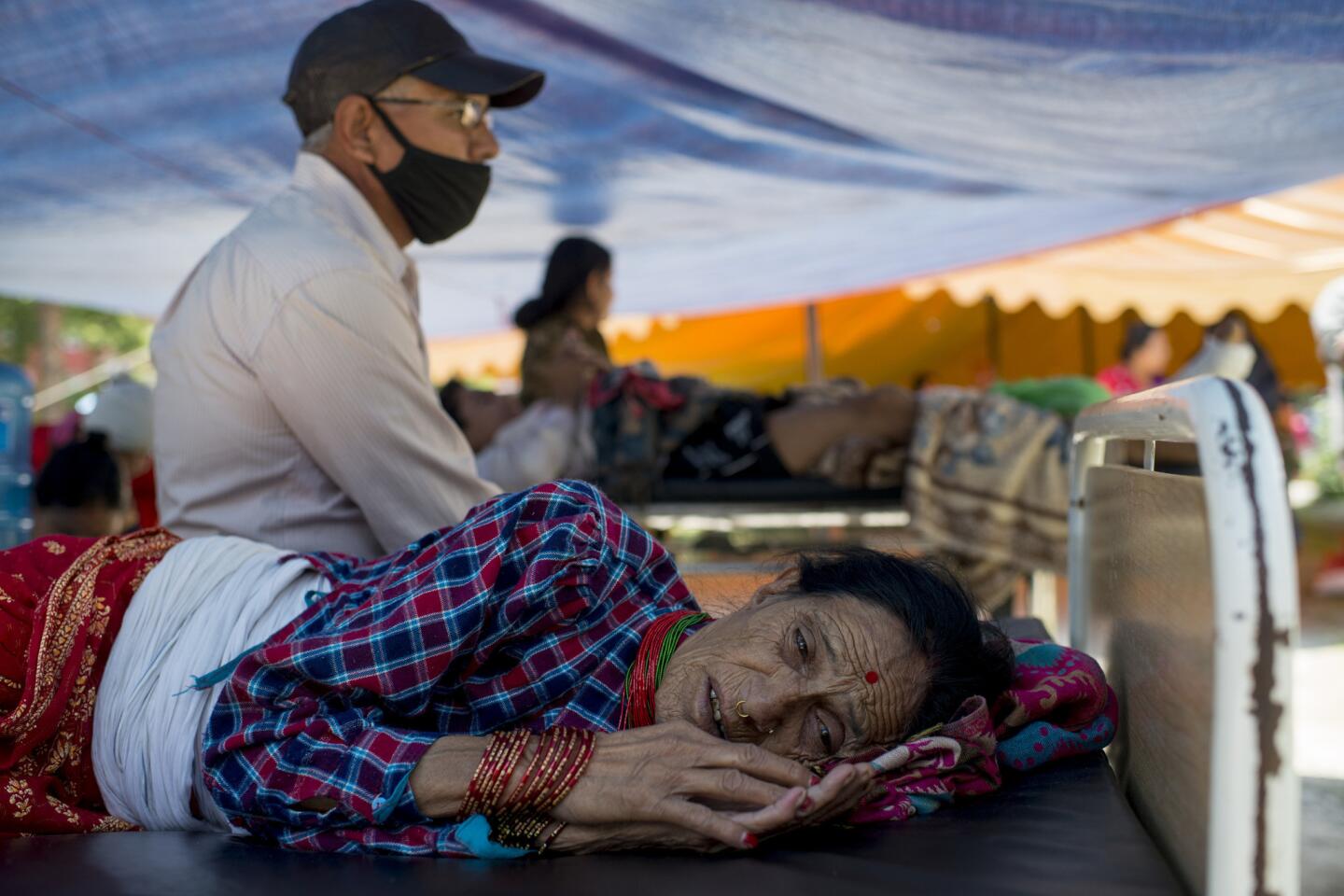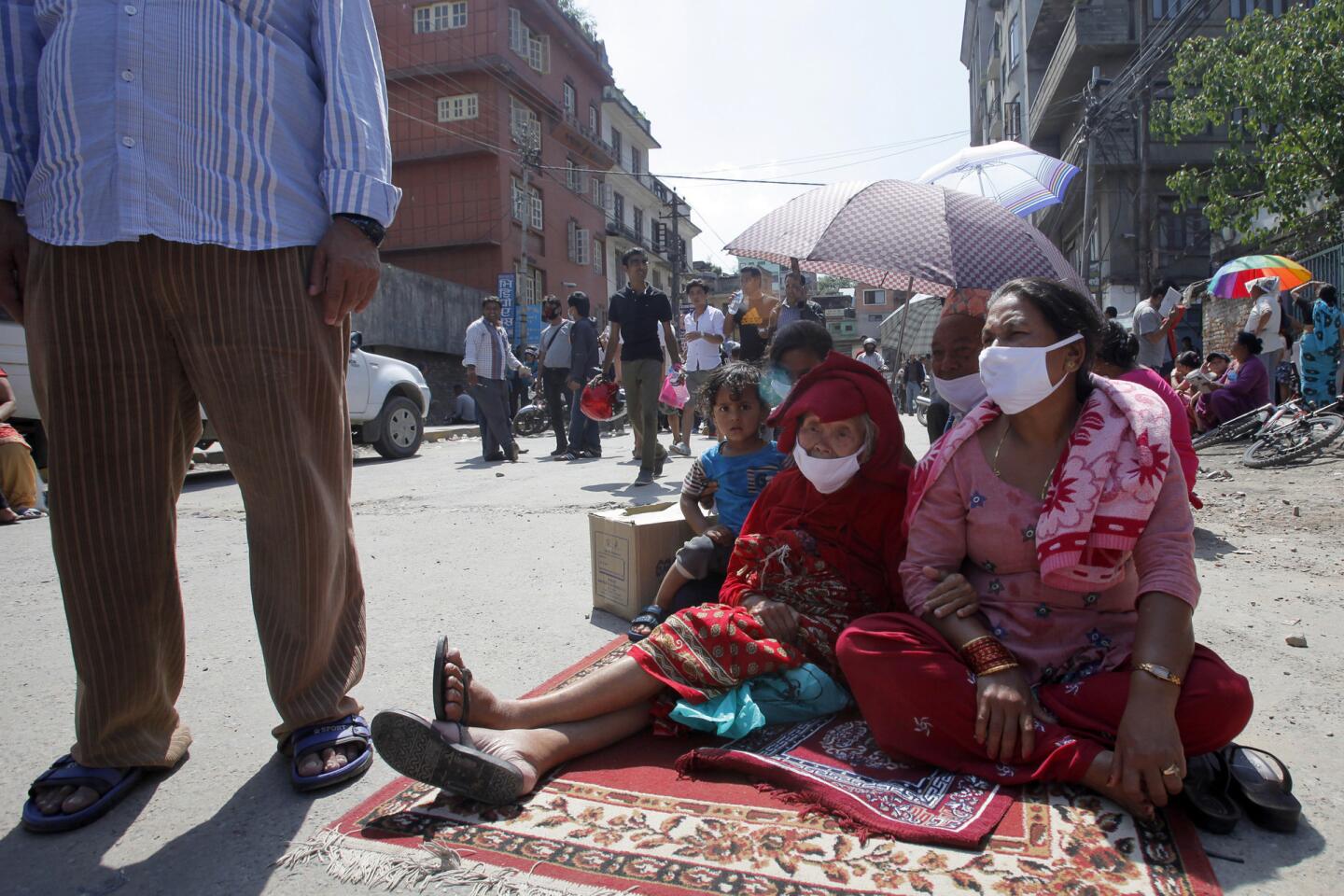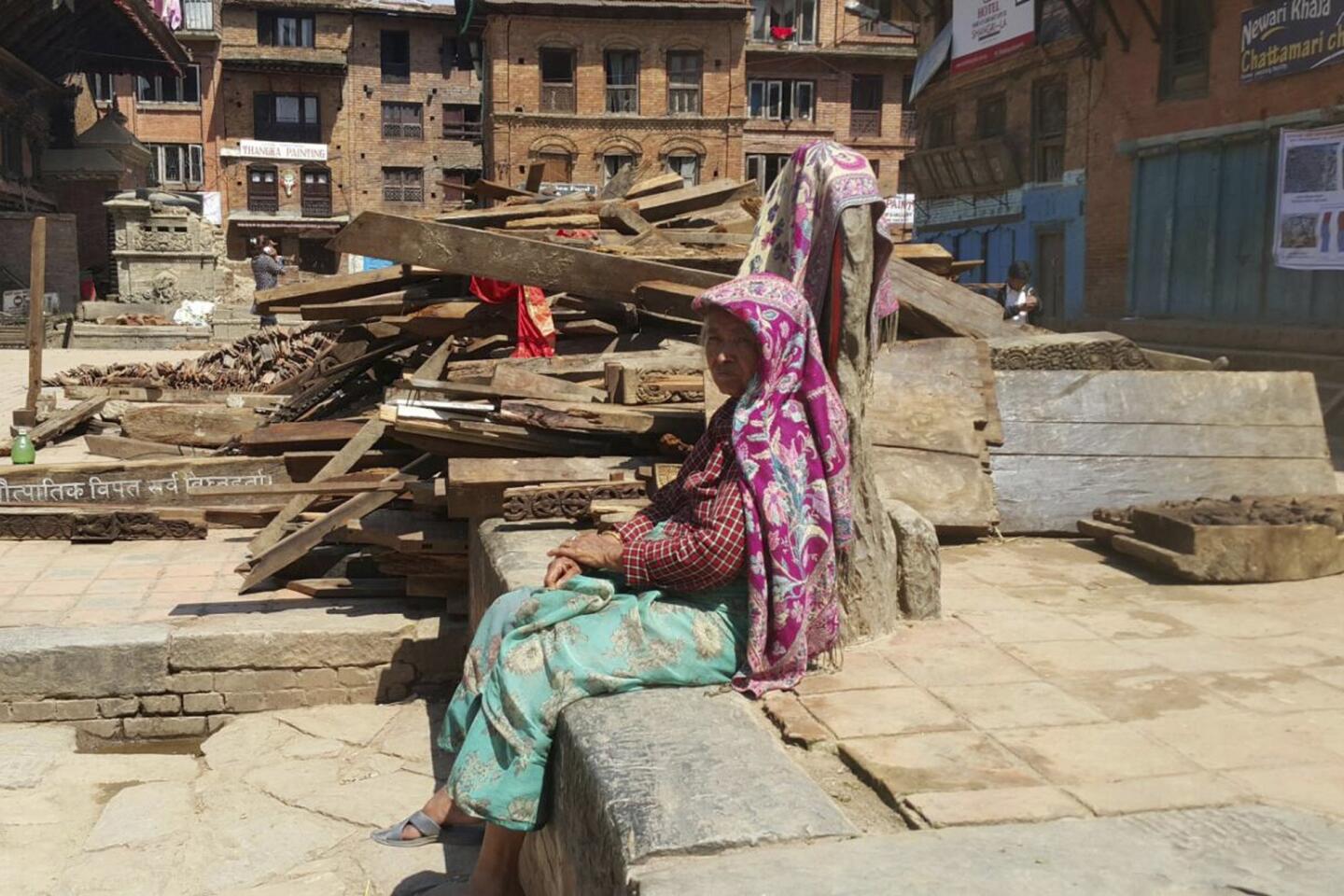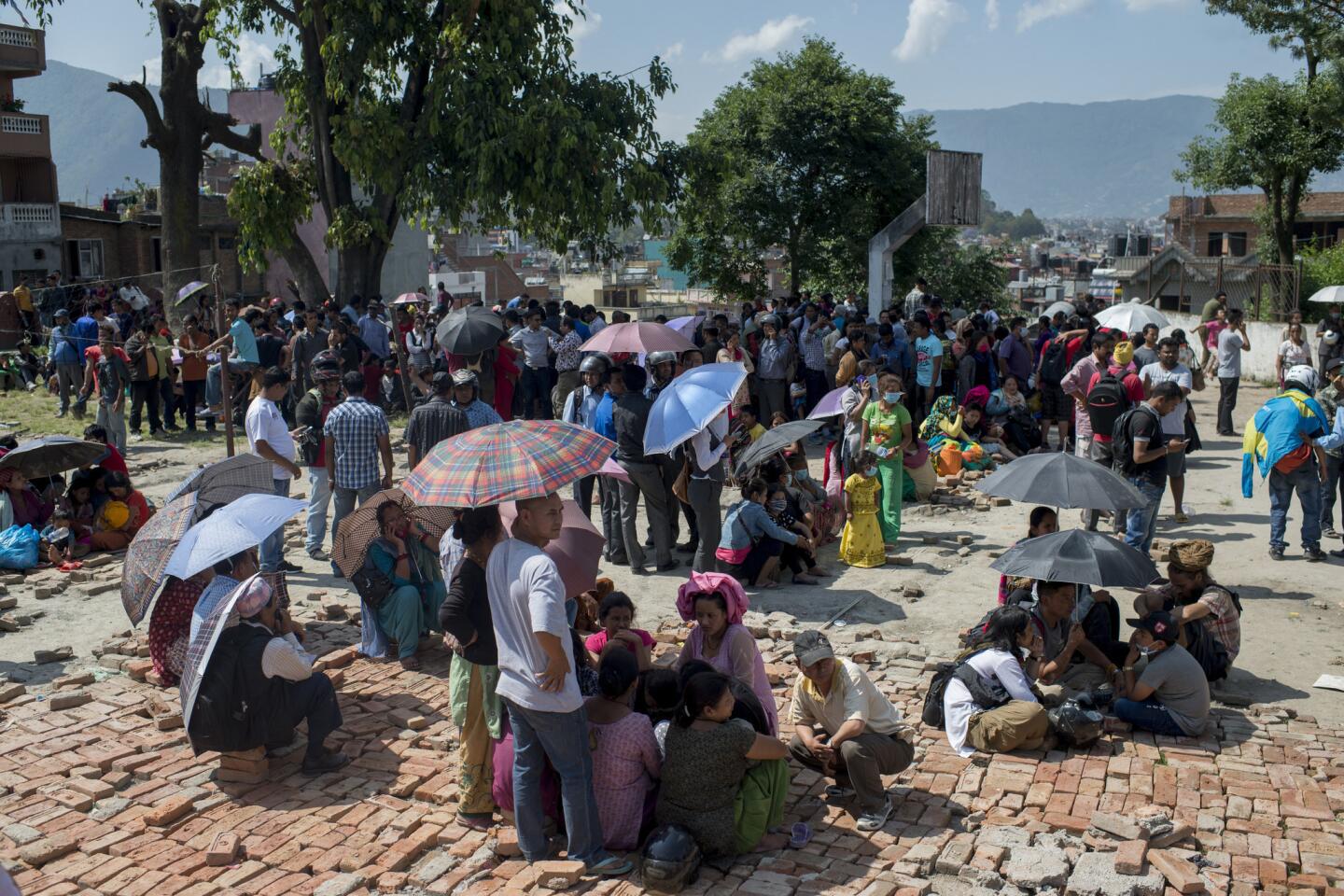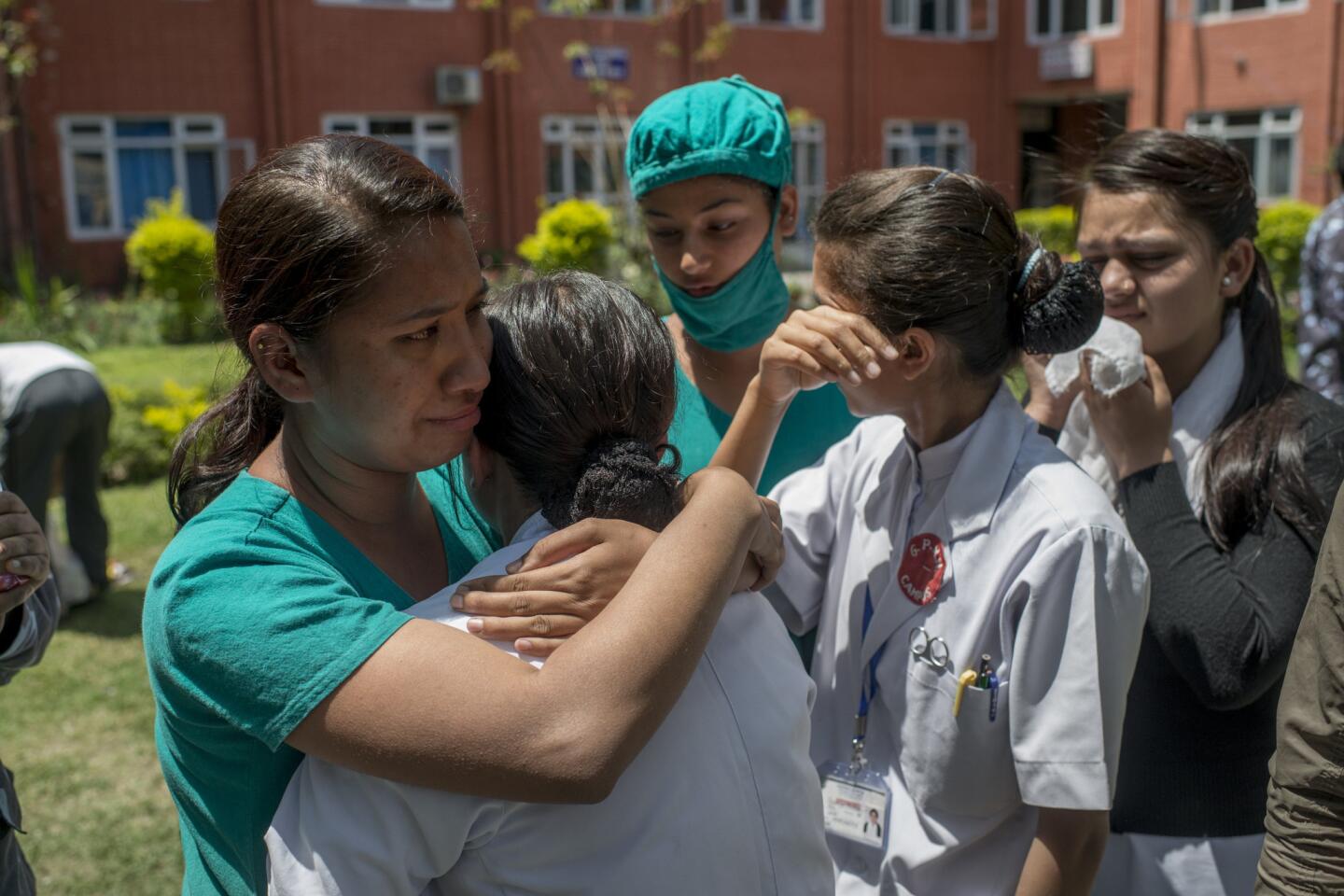At least 42 dead after 7.3 earthquake hits Nepal
- Share via
Reporting from KATMANDU, Nepal — Still reeling from last month’s devastating earthquake, Nepal was hammered again Tuesday by a magnitude 7.3 temblor that caused dozens more deaths, unleashed fresh landslides and brought down unsteady buildings.
By late afternoon, Nepal’s Home Affairs Ministry said at least 42 people were killed and more than 1,117 injured in the largest aftershock yet recorded from the 7.8 quake on April 25. Officials warned that the toll could rise.
The epicenter was about 47 miles northeast of the capital, Katmandu, near the Chinese border, according to the U.S. Geological Survey. The April 25 quake, which killed more than 8,150 people, was centered in the mountains west of Katmandu.
The tremor struck just before 1 p.m. local time, sending residents of the capital scurrying into the open air for safety, and was followed by a series of smaller tremors that rattled nerves even further.
Within hours, new makeshift tents had begun popping up in parts of Katmandu as families that had survived the earlier quake and returned to their homes in recent days decided again they were safer sleeping outdoors.
The Home Affairs Ministry said nine people were pulled out alive from damaged buildings in the remote Dolakha district, close to the quake’s epicenter near Mt. Everest, and three from structures in Katmandu.
A U.S. search-and-rescue team was seen leaving its hotel in central Katmandu a few hours after the quake and was believed to be headed for Dolakha. A spokeswoman for the U.S. Embassy in Katmandu said three U.S. military aircraft were taking 20 U.S. personnel, including 18 urban search-and-rescue team members, “to conduct initial assessments in Charikot,” the seat of Dolakha district.
The search teams -- including firefighters from Los Angeles County and Fairfax County, Va., who deployed after the April 25 quake -- were originally scheduled to depart Nepal on Monday but have delayed their departure and were responding to Tuesday’s tremor under the direction of Nepalese authorities, U.S. officials said.
Using Osprey aircraft, which can take off and land vertically, the U.S. teams and Nepalese army personnel evacuated at least 16 wounded people from Charikot to Katmandu on Tuesday, the embassy said.
Embassy officials said they had no immediate reports of fatalities or injuries to U.S. citizens.
At least 30 of the country’s 75 administrative districts were affected, according to state-run Radio Nepal. The quake caused the temporary closure of Katmandu’s Tribhuvan International Airport, the hub for relief operations, and was felt as far away as New Delhi, 500 miles west of Katmandu.
At least four were killed in Chautara, the seat of Sindhupalchowk district, said Paul Dillon, a spokesman for the International Organization for Migration, citing reports from colleagues there. The town of about 6,000 people, which is built on a rugged ridge line, saw roughly 90% of its buildings damaged or destroyed in last month’s quake.
Landslides were reported in parts of Sindhupalchowk, which suffered the greatest number of casualties in last month’s tremor. It was not immediately clear if the landslides caused new casualties.
In central Katmandu’s Durbar Square, which was all but leveled in the April 25 quake, loose debris tumbled to the ground from the damaged hulk of a nine-story palace. Residents of the capital ran into the streets to escape damaged buildings and crammed into city buses in an apparent effort to get home.
Amulya Tamrakar, 31, rushed to his son’s school in central Katmandu and the two were taking shelter at the Yak and Yeti Hotel. It was the first day he had sent his son to school since April 25.
“Just when we thought things were getting normal, today’s earthquake has again raised fear and panic among us,” Tamrakar said. “Thank God my son and family are OK.”
Talak Bahadur Khadka was driving a van in Gongabu, a densely packed section of Katmandu where several high-rise buildings collapsed April 25, when Tuesday’s quake struck. A large water tank toppled to the ground, and moments after Khadka leaped out onto the road, debris from a nearby house crashed down on the van.
He and his passenger ran to safety, but he was not sure if the people in the car behind him escaped.
“I got lucky by only a second,” Khadka said.
Relief workers said the major aftershock created new challenges for the massive international humanitarian effort that has been mobilized since the April 25 quake, the biggest in Nepal in nearly a century, which also injured nearly 18,000 people and damaged or destroyed hundreds of thousands of structures.
Kayla Robertson, a relief worker with the U.S.-based charity World Vision, was in central Katmandu when Tuesday’s quake struck and said, “All you could hear was screaming and crying.”
“People have only just stopped and been able to pick up the pieces from last month’s quake,” Robertson said. “Sadly, all of our activities in the field have stopped. We’ve put a halt to them while people go to be where they’re safe.”
Special correspondent Rai reported from Katmandu and Times staff writer Bengali from Mumbai, India.
Follow @SBengali on Twitter for news out of South Asia
More to Read
Sign up for Essential California
The most important California stories and recommendations in your inbox every morning.
You may occasionally receive promotional content from the Los Angeles Times.


